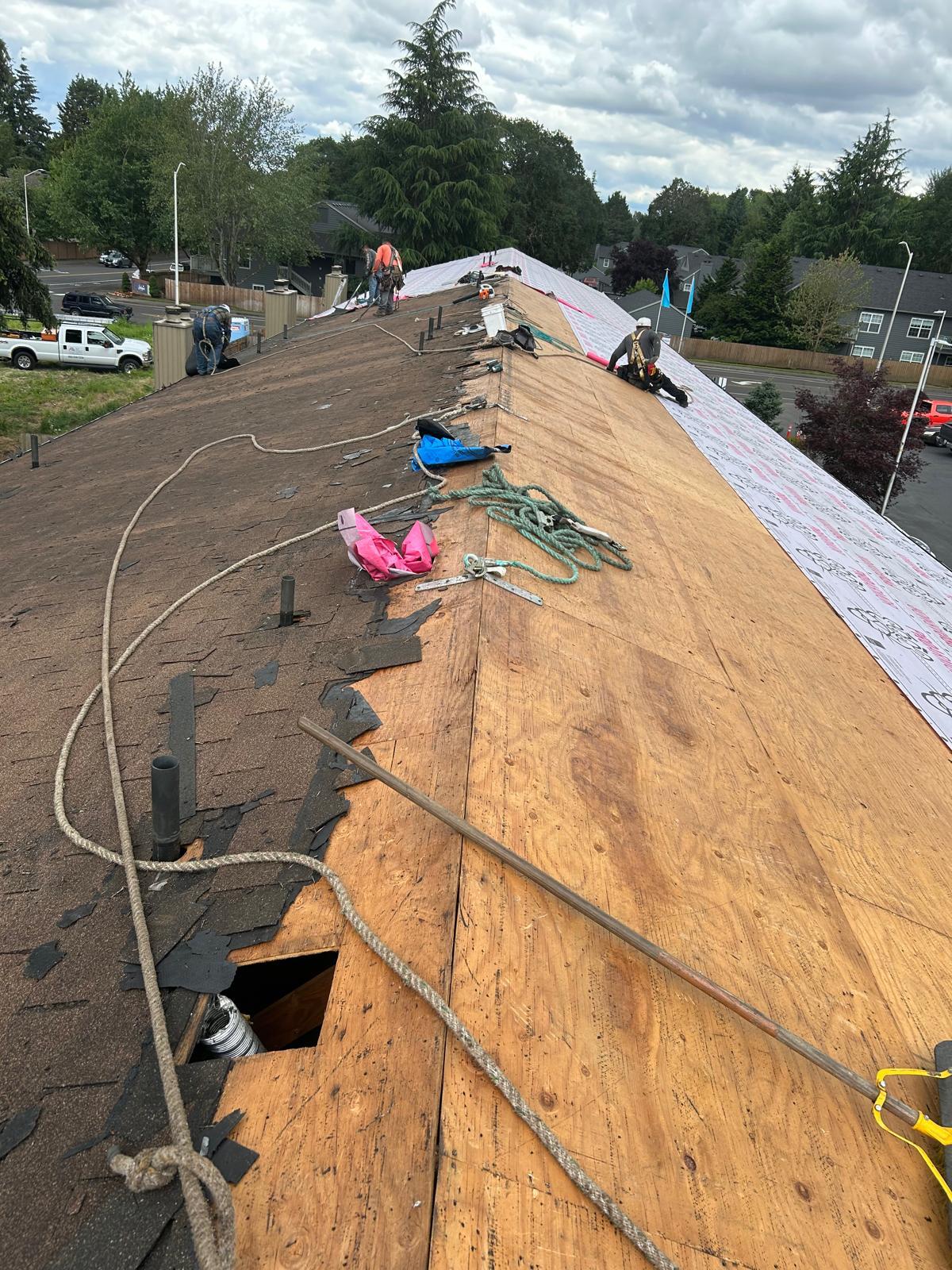Age and Material Lifespan
Every roofing material—from asphalt shingles to cedar shakes—comes with an expected lifespan. In Oregon’s climate, asphalt shingles typically last 20–25 years, while wood shakes may age more quickly due to moisture exposure. If your roof is nearing or past its expected lifespan, it’s time to schedule a professional evaluation.
Curling, Cracked, or Missing Shingles
One of the most visible signs of roof deterioration is shingle damage. Shingles that are curled at the edges, cracked, or missing granules are no longer providing full protection. Missing shingles expose underlayment to rain, which can lead to leaks if not replaced promptly.
Granules in Gutters
When shingles lose granules, these small, sand-like particles collect in gutters and downspouts. Excessive buildup is a warning that the protective layer of the shingle is eroding; the underlying material is exposed and vulnerable to damage.
Dark Streaks or Algae Growth
Oregon’s wet seasons fuel the growth of algae or moss on roof surfaces. While dark streaks may look harmless, they retain moisture and can degrade shingles over time. If cleaning doesn’t solve the problem, or if algae return quickly, a new roof may be a more reliable solution.
Exterior Flashing and Sealant Wear
Check areas around chimneys, vents, skylights, and roof valleys. Cracked, rusted, or deteriorated flashing allows water to infiltrate beneath roofing materials. A comprehensive inspection should identify any seal failures before they become leaks.
Sagging Roof Decking
Sagging or uneven areas on your roof indicate structural weakening. This is serious; it implies that the roof deck or supporting rafters have moisture damage or rot. A complete roof replacement is usually the safest response.
Daylight Through Roof Boards
From inside your attic, look for light peeking through roof boards. Even small gaps can allow rainwater or pests inside. This symptom signals worn roofing material or improper installation and usually necessitates replacement.
Interior Water Damage
Stains on the ceiling, peeling paint, or mildew growth may all point to a failing roof above. Catching leaks early can limit damage, but persistent water intrusion typically requires a full roofing replacement to resolve underlying issues.
Rising Energy Costs or Temperature Swings
An aging roof often loses insulation value, resulting in fluctuating indoor temperatures and increased energy costs. Poor attic ventilation and deteriorating materials lead to struggling HVAC systems. A new roof can improve comfort and energy efficiency.
What to Do Next
If any of these signs are present, call Advanced Roofing Technologies Inc. at 503-339-7234 for a detailed assessment. A roofing specialist in Salem, OR can inspect your roof and determine whether repairs suffice or a full replacement is necessary. Call us to learn more about our services and schedule an inspection.





